
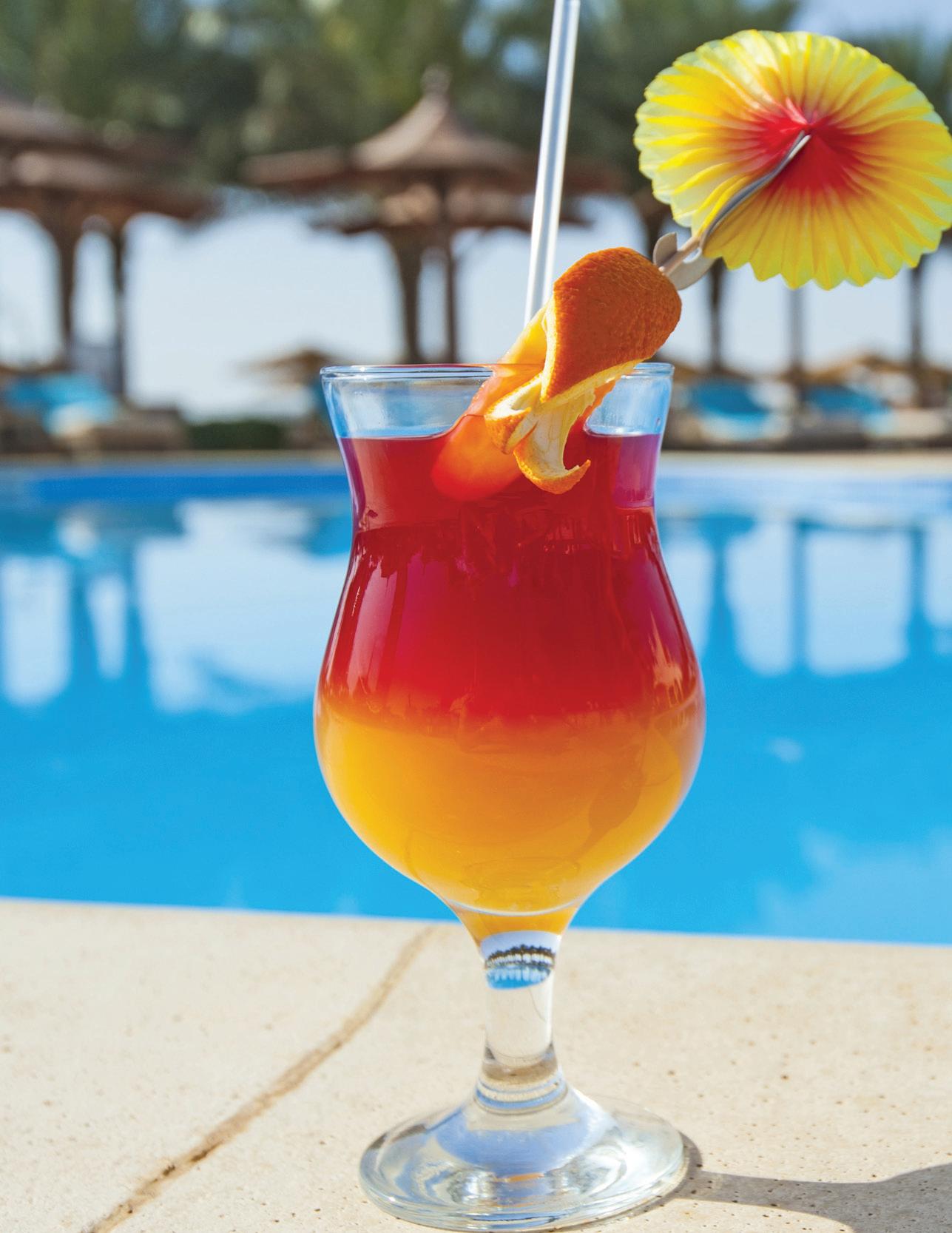



















July
e ditor and Publisher: luis@gotrum.com
e xecutive e ditor: margaret@gotrum.com
Cigar and r um: philip@gotrum.com
Angel’s s hare: paul@gotrum.com
r um h istorian: marco@gotrum.com
r um in the n ews: mike@gotrum.com
Cooking with r um: sue@gotrum.com
w ebmaster: web@gotrum.com
d irector of Photography: art@gotrum.com
i f you would like to submit news or press releases, please forward them to:

news@gotrum.com
You can download the free electronic version (low-res) of this magazine, or purchase the high resolution printed version at:
WWW. gotr U m . com

The printed version of “ g ot r um?” is produced with F s C-certified paper, which means it is from responsibly managed forests and verified recycled sources.


i f you ask anyone who lives in sugarcaneproducing areas about the inconveniences resulting from cane-harvesting operations, they will likely point out a few areas of irritation, including:
• i f the cane fields are burned prior to harvesting, the ashes are carried by the wind and fall on everything and everyone . All around the Caribbean, Central and s outh America, i ’ve heard the complaints by angry housewives, griping about the clean laundry that was put outside to dry, only to find it covered in ash later in the day!
• To keep dust levels down during the harvest/dry season, dirt roads in and around the communities near the sugar mills and the distilleries are often sprayed with spent wash (vinasse). w hile this approach does help reduce some of the dust, the smell is less than appealing, and it attracts A lo T of flies!
• The number of trucks hauling harvested sugarcane from the fields to the mills compound traffic congestion and are often involved in accidents.
w hat most citizens don’t usually consider, is that the same crop responsible for all those problems is also behind the employment of many individuals who rely on the sugarcane income to support their families. s ugarcane is also responsible for a large volume of sugar exports, which help subsidize the price of the sugar sold domestically.
The focus of this month’s “ s weet Business of s ugar” is on n icaragua (pg. 44). As you will see when you read the report, some sugar mills have lost up to 30% of their workforce, including experienced truck drivers, due to the mass exodus of professionals leaving the country to escape

the current political and economic crisis. This exodus is bad news but is even worse when you think about all the electric energy that countries like n icaragua produce using the bagasse after the cane is crushed at the mills. e lectricity prices invariably go up when supply falls short of demand, so it is easy to see the domino effect that worker migration can have on the cost of living in sugarcane-producing regions.
As with all things in life, welcoming the sweet side of things means that we must also accept their bitter side. Cheers!
l uis Ayala, Editor and Publisher
do you want to learn more about rum but don’t want to wait until the next issue of “got rum?”? Then join the “rum lovers unite!” group on linkedin for updates, previews, Q&A and exclusive material.
m y name is Paul s enft - r um r eviewer, Tasting host, Judge and w riter. m y exploration of r ums began by learning to craft Tiki cocktails for friends. i quickly learned that not all rums are created equally and that the uniqueness of the spirit can be as varied as the locales they are from. This inspired me to travel with my wife around the Caribbean, Central America, and u nited s tates visiting distilleries and learning about how each one creates their rums. i have also had the pleasure of learning from bartenders, brand ambassadors, and other enthusiasts from around the world; each one providing their own unique point of view, adding another chapter to the modern story of rum.

The desire to share this information led me to create www. r umJourney.com where i share my experiences and reviews in the hopes that i would inspire others in their own explorations. i t is my wish in the pages of “ g ot r um?” to be your host and provide you with my impressions of rums available in the world market. h opefully my tasting notes will inspire you to try the rums and make your own opinions. The world is full of good rums and the journey is always best experienced with others.

Cheers!
Created by Karthik s udhir, founder of Phenomenal s pirits, r on i zalco is a blend of three molasses-based rums from g uatemala, n icaragua, and Panama that have been aged for 10 years in used American white oak bourbon barrels. Part of the molasses used to create this blend is from sugarcane grown on the side of the i zalco stratovolcano. The rum is blended and bottled in v irginia Beach, v irginia, at 43% AB v in 700 ml bottles. For more information about the history of this rum company and its products, check out this interview with m r. s udhir by m argaret Ayala from the January 2019 issue of g ot r um? m agazine.
The bottle has an interesting, short, tapered neck design that is easy to hold and pour. The front label clearly establishes the identity of the brand for consumers, and the back of the bottle provides tasting notes about the rum. The liquid in the bottle is a dark amber color in the bottle and lightens slightly in the glass. s wirling the rum created a thin band that quickly thickened and released a couple of waves of legs that became thicker as they dropped, before beading up and evaporating.
The aroma is caramel forward, with notes of dried apricot, milk chocolate, raisins, and toasted oak tannins.
The toasted oak and caramel lead the way as the alcohol covers the tongue. w ith additional sips, i found notes of sweet cocoa, dried fruit-apricots, raisins, and cranberries; roasted almonds, and

cashews, rounded out by a bit of sweet tobacco leaf. The flavors merge, dance, and linger in a long, dry finish.
r eview
w hen i spotted the bottle in the store, the shape of it was the first thing i noticed, as it easily distinguished itself from the others on the shelves. i was intrigued by the idea of a rum blend that was comprised of three rums from Central America and wanted to learn more. o verall, i found it hit some of the flavor notes i expected to find with a s panish-style rum, but may not have had some of the complexity i look for in a ten year old rum blend.
i particularly enjoyed how the toasted oak notes balanced the caramel notes with the initial sip and remained consistent throughout the experience. That said, i think the blender did a good job of delivering a sweet and savory experience that can be sipped and enjoyed with a meal or as an ingredient in a classic drink like a m anhattan or o ld Fashioned cocktail.

d uring the spring of 2023, Plantation announced the release of their second collection of rums for their “ u nder the s ea” vintages. The series features six limited edition bottlings from the rum making world, including Barbados, Fiji, g uyana, Jamaica, Panama, and v enezuela, with artwork showcasing sea life common to the region where the rums are produced. For the Panama release, a humpback whale is featured on the box and bottle labels for the product. The rum was produced in 2008 at Panama’s Alcoholes del i stmo distillery using molasses made from local sugarcane and distilled in a column still. Aged for 12 years in used bourbon barrels in Panama, and one additional year in Ferrand casks in Cognac, France, where it was blended and bottled at 45.7% AB v l imited to 19 casks, it was noted that no dosage was used in the creation of this product, which will only be sold in the u nited s tates in select markets.
As noted, the 750 ml bottle is sold in a box with matching artwork. There is some basic information about the product on the bottle and box, but the focus is on the artwork showcasing humpback whales breaching the surface and swimming under the ocean with fish and over reefs. The bottle is embossed with the Plantation logo and has raffia weave around it, reminding me visually of the glass float lights you see in some bars.
The liquid is a pale golden amber in the bottle and glass. i noticed a small amount of distillate in the bottle, but nothing in the glass. s wirling the rum in the glass generated a medium band that quickly thickened and released a series of fast moving tears down the side. w ithin a few minutes, the ring and tears had evaporated, leaving residue in their wake.
The aroma leads to a rush of fruit like strawberries, raspberries, ripe peaches, orange zest, and lemongrass. As the liquid sat and the fruit notes settled, i noted a confectionary sweetness reminiscent of a tart, light tweak of nutmeg and allspice at the end.

l ike the aroma, the first sip is a fruity burst of flavors and alcohol with the introduction of a strong honey sweet apple note. At the halfway mark, a toffee laden spiciness comes into play along with toasted nuts, nutmeg, and allspice, balancing the fruit notes. As the other flavors fade, strong notes of dark cacao, anise, and dried tobacco leaf enter the profile, lingering in a long, dry finish.
r evieww hen i heard about the first u nder the s ea Collection release, i found the idea interesting and some of the artwork gorgeous. The second collection is equally interesting, and i dare say that some of the artwork is even better than that found in the first series. i t had been a while since i had reviewed a rum produced by Plantation as well as something that was produced in the country of Panama, so this seemed like an opportune moment to evaluate both in this new release. By design, a product to be sipped and savored, the fruit notes were interesting and unique compared to other Panamanian rums i have experienced. i found the midpalate notes and dry finish to be very much in line with other products i have had that were made by Alcoholes del i stmo. m y only guess is some of the fruit notes were produced during the year of continental aging in Ferrand Casks in France. i enjoyed the unique exploration of a rum from Panama and will be curious to sample some of the other rums in this collection.



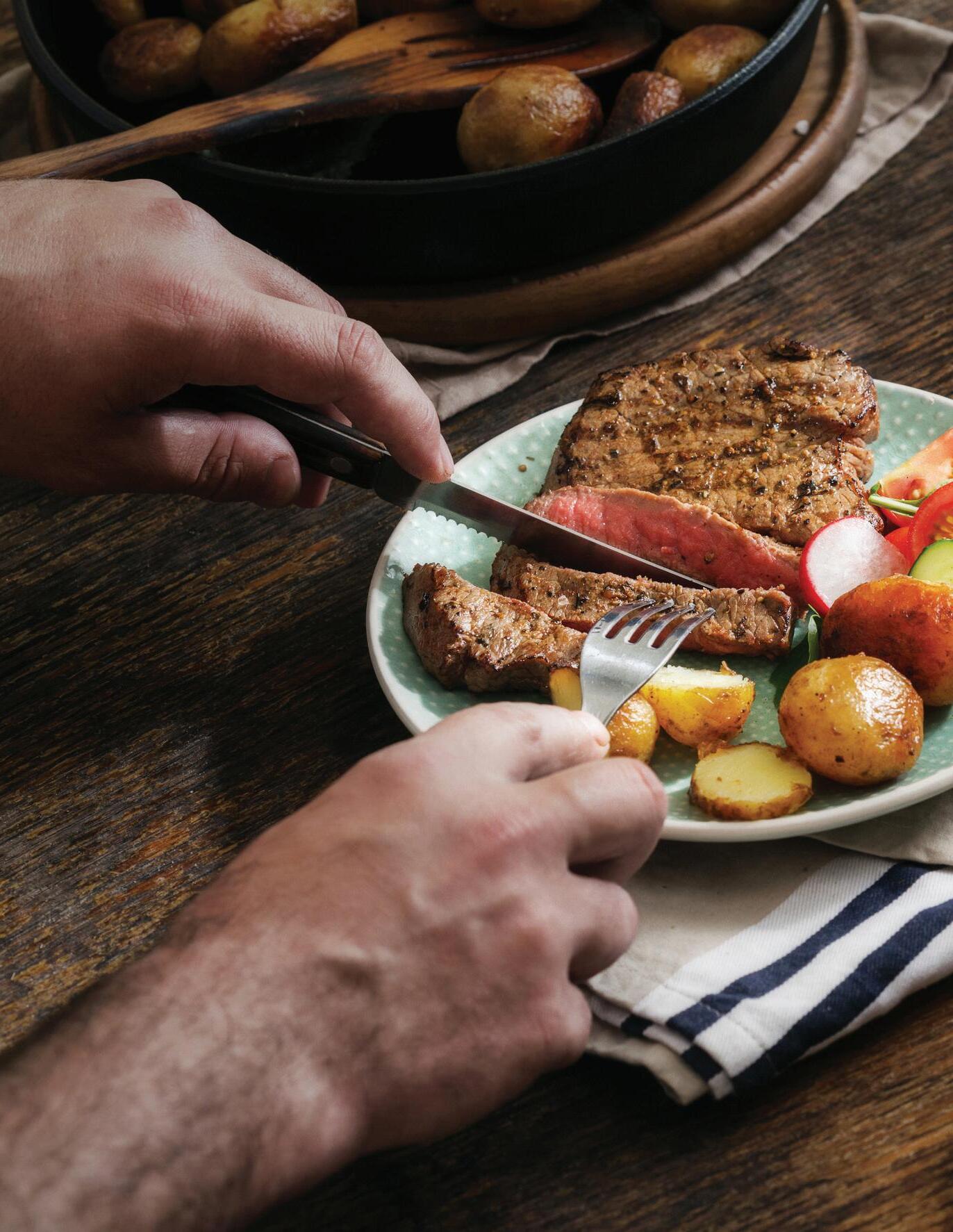 by Chef Susan Whitley
by Chef Susan Whitley

i was looking through books and website for inspiration for my next rumbased dish and i came across this amazing recipe. i have to share it “as is” because it is delicious! h ope you get inspired to try it too.
i ngredients:
• 2 tablespoons coconut oil for browning
• 12 whole chicken drumsticks bone-in, skin-on
• salt for seasoning the chicken
• 1 1/2 cups dark spiced rum
• 1/2 cup coconut balsamic vinegar
• 1/2 cup shredded coconut
• 3 tablespoons worcestershire sauce
• 4 tablespoons dark brown sugar




• 1/2 teaspoon all-spice
• 3 cups chicken stock
• Additional salt, to taste
i nstructions:

1. Pre-heat the oven to 350. g et a large dutch oven or pot on the stove and heat the coconut oil over medium high heat. s eason the chicken legs with salt. Brown the chicken pieces in two batches until they are golden on the outside. r emove them from the pot and set them aside.
2. d eglaze the pot with the rum, scraping up the brown bits from the bottom. Add in the coconut balsamic and let the mixture reduce for 2-3 minutes.
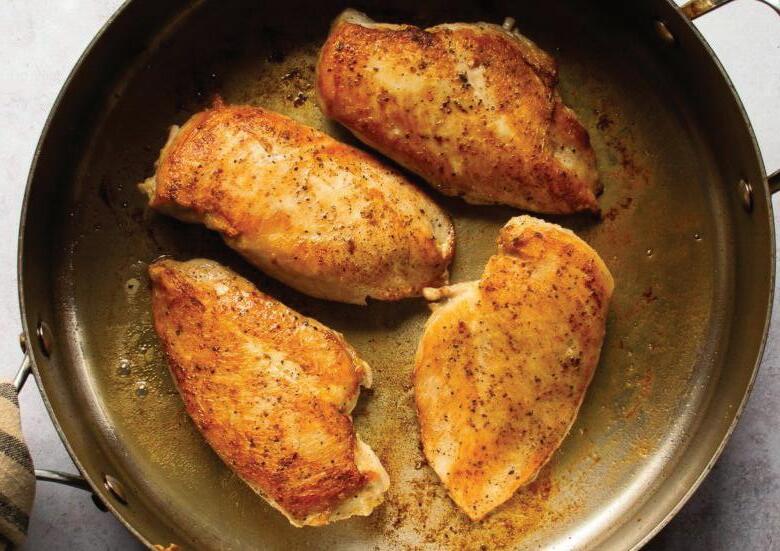
3. Add in the shredded coconut, w orcestershire sauce, brown sugar, all spice and chicken stock. g ive the braising liquid a big stir to combine it. Add the chicken back into the pot and bring it to a low boil. Cover the pot with its lid and transfer it to the oven.










4. l et the coconut rum braised chicken cook for an hour and a half, until it is fall-off-the-bone tender and full of flavor. Then just plate and serve! You can serve it on a platter on a bed of rice or pineapple chunks.
r ecipe Credit: https://jeanieandluluskitchen.com/coconut-rum-braised-chicken/
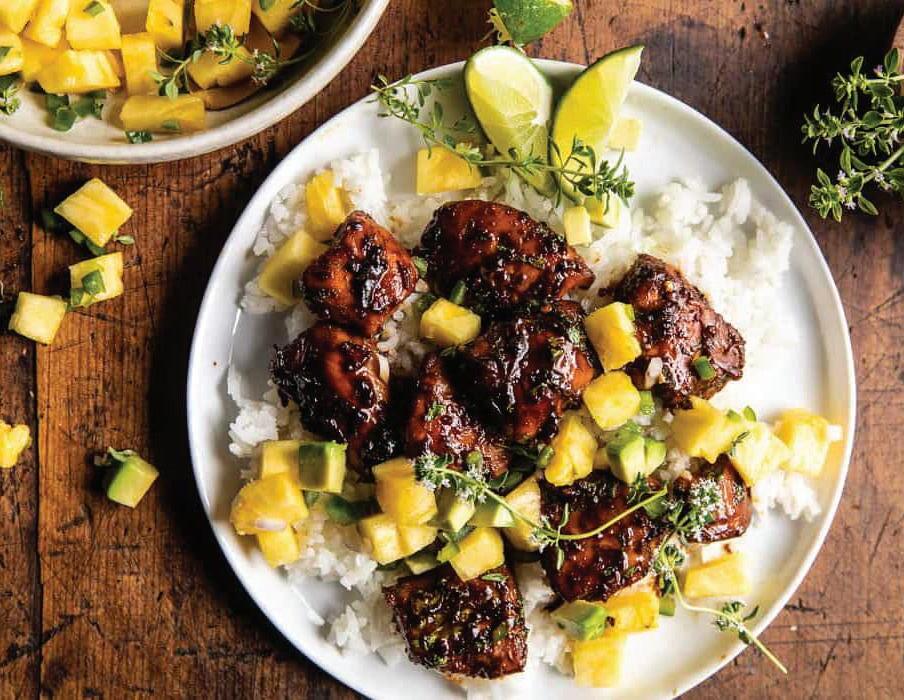



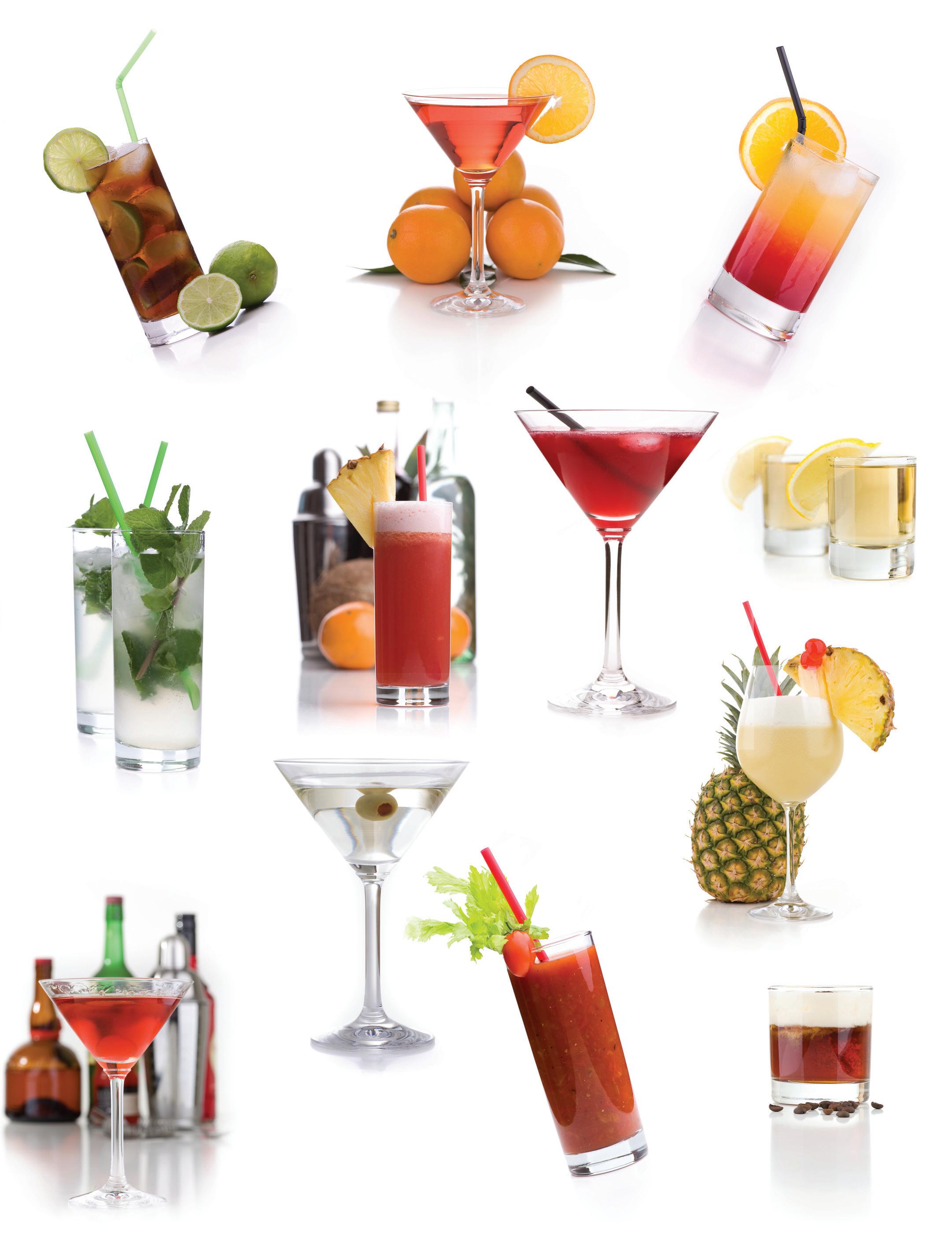


Are you looking for festive reasons to raise your glass this month?

h ere are a few of them!
w rite to us at info@gotrum.com if we missed any!
JUL 2 n ational a nisette Day
JUL 8 World r um Day
JUL 10 n ational Piña c olada Day
JUL 11 n ational m ojito Day
JUL 12 m ichelada Day
JUL 14 n ational g rand m arnier Day
JUL 19 n ational Daiquiri Day
JUL 24 n ational tequila Day
JUL 27 n ational s cotch Day

Featured Cocktail: Classic d aiquiri (July 19th)
i ngredients
• 1 1/2 oz. l ow-congener, u n-aged (white) r um
• 3/4 oz. Freshly s queezed l ime Juice
• 1/2 to 3/4 oz. s imple s yrup, to taste
d irections:
1. Add the ingredients to a cocktail shaker with ice cubes. s hake well.
2. s train into a chilled cocktail glass. s erve and enjoy.
Tips (www.thespruceeats.com):
• i f your drink is a bit too tart, add more syrup. i f it is too sweet, add more lime. Additionally, the simple syrup you use will play a role; with a rich (2:1) simple syrup, you won’t need as much as a daiquiri made with a 1:1 syrup.
• Though a daiquiri isn’t usually garnished, a lime wedge or twisted lime peel is a good option.
• l ike many classic cocktails, the daiquiri is designed to be a short, neat drink, which is why the final volume is only 3 ounces. Considering its strength, this is not a bad thing. You can certainly double the recipe or serve it on the rocks if you like.
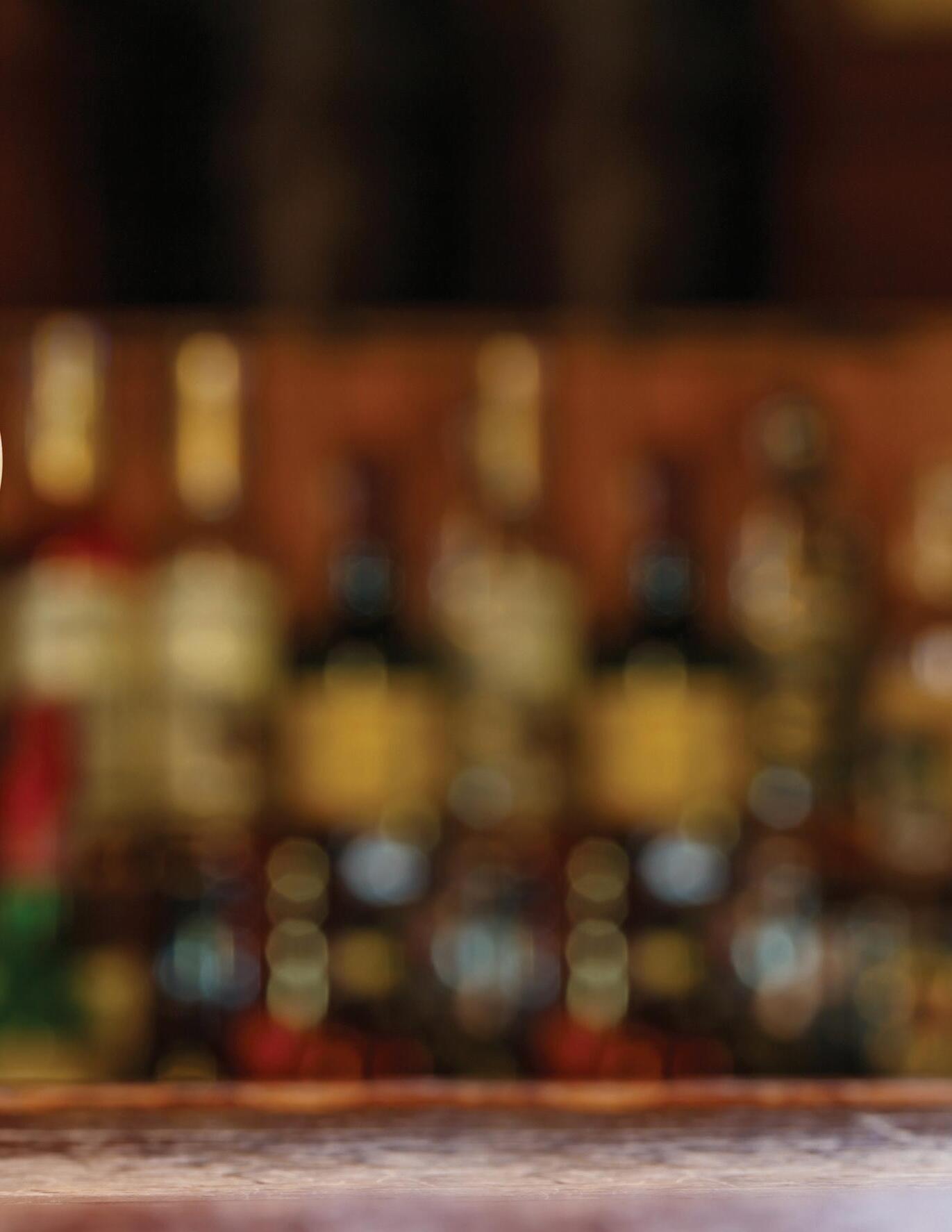
r eviews of books related to sugarcane, milling, fermentation, distillation, aging, blending and other topics related to the production or history of rum.


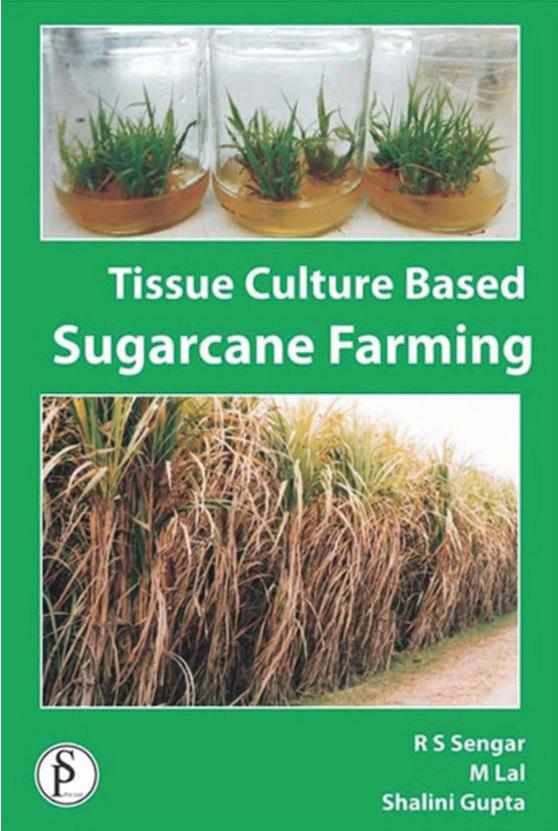 by r . s . s engar, m . Lal and s halini g upta
by r . s . s engar, m . Lal and s halini g upta
(Publisher’s r eview) m odern commercial sugarcane varieties are obtained through a multi-stage selection scheme requiring over a period of approximately 10 years through identification of a few elite clones from a very large population of hybrid seedlings. l ack of suitable multiplication procedure and perpetuation of systemic diseases are the serious problems in multiplying an elite genotype of sugarcane conventionally in the open field. d ue limited availability of seed cane of a new variety at the time of its release and slow multiplication rate by conventional means, it takes a further period of about 10-12 years to cover the desired area for commercial cultivation. By the time the variety starts deteriorating due to biotic and abiotic stresses. i t has also been realized that the growing demand of seed cane of newly released varieties cannot be fulfilled timely by the conventional methods of plant multiplication. Therefore, the use and exploitation of new biotechniques are quite essential for faster multiplication of newly released varieties. m icropropagation is currently the only realistic means of achieving rapid and large scale production of disease free planting material of newly developed varieties in order to speed up the commercialization process in sugarcane. Thus, plant tissue culture has now become the major component of biotechnology. g enetic engineering and molecular biology can be used for crop improvement through the application of various technique developed in the field of biotechnology. s everal exciting developments have taken place in sugarcane biotechnology during the last 5 decades. The first edition of this book entitled “Tissue culture based sugarcane farming” is being brought out as an introductory text covering plant regeneration in vitro using cell, tissue and organ culture. Basic aspects such as large scale micropropagation, cell culture, cellular totipotency, somatic embryogenesis and various aspects of sugarcane cultivation have also been included. i n this book, comprising 29 chapters, various protocols have been described in very simple manner. The language of the text is simple and the subject matter is fully illustrated. n o other book is available with such an approach covering basic to applied aspects of plant
tissue culture. i hope this book will prove to be of a great use within the classroom as teaching/learning material and in the laboratory for practical and research purposes for the scientist as well as professionals in the fields of sugar industry.
A sin : B083 m XT4 n J
Publisher: s tudium Press (June 30, 2013)
Publication date: June 30, 2013
l anguage: e nglish
File size: 5450 KB
Text-to- s peech: e nabled
s creen r eader: s upported
e nhanced typesetting: e nabled
X- r ay: n ot e nabled
w ord w ise: n ot e nabled
s ticky notes: o n Kindle s cribe
Print length: 419 pages


Your o ne- s top s hop for a ged r ums in Bulk!
• Column- d istilled, Pot- d istilled or Blends
• h igh Congener ( i ncluding h igh e sters), l ow Congener or Blends
• Aged in American or French o ak Barrels
• Aged in r ye w hiskey, Bourbon, Tequila, Armagnac, Port, s herry and w ine Barrels
• s ingle Barrels and s econd Aging/Finish

• d istilled in the us A, Central America, s outh America or in the Caribbean

• o ver 150 m arks/ s tyles Available, plus Custom Blends
• l ow m inimums and Fast Turnaround, w orldwide s hipping
i was born in 1954 in a little town in Tuscany ( i taly) where i still live. i n my youth, i got a degree in Philosophy in Florence and i studied Political s cience in m adrid, but my real passion has always been h istory and through h istory i have always tried to understand the world, and men. l ife brought me to work in tourism, event organization and vocational training, then, already in my fifties i discovered rum and i fell in love with it.

i have visited distilleries, met rum people, attended rum Festivals and joined the r um Family. i have studied too, because r um is not only a great distillate, it’s a world. Produced in scores of countries, by thousands of companies, with an extraordinary variety of aromas and flavors, it is a fascinating field of studies. i began to understand something about sugarcane, fermentation, distillation, ageing and so on.
s oon, i discovered that rum has also a terrible and rich h istory, made of voyages and conquests, blood and sweat, imperial fleets and revolutions. i soon realized that this h istory deserved to be researched properly and i decided to devote myself to it with all my passion and with the help of the basic scholarly tools i had learnt during my old university years.
i n 2017 i published the book “A meri CA n rum – A s hort h istory of r um in e arly America”
i n 2019 i began to run a Blog: www. therumhistorian.com
i n 2020, with my son Claudio, i have published a new book “F ren C h rum – A h istory 1639-1902”.
i am currently doing new research on the h istory of Cuban r um.
Bacardi is perhaps the most famous rum brand in the world. The Company was founded in 1862 in s antiago (Cuba) and for many years presented its rum and itself as a product authentically, typically, Cuban. Then things changed and today Bacardi is a large multinational company with no concrete ties to Cuba. But we will come back to this in the future. i n this article i just want to tell about the birth and the first steps of Bacardi and of a new type of rum, the Ron ligero cubano , that is, the Cuban light rum, trying to understand the reasons for its great and lasting success.
i t’s not an easy task. o ver time, the Company itself has produced its own literature, and its own mythology, to which have been added numerous works written about it by many authors. Besides, Bacardi has always aroused strong mixed passions, not so much for its rum as for its political role.
m oreover, i could only do little first hand research. That is, i read only a few primary sources such as archives, documents and books of the time, while i relied mainly on
works written by other authors, that is, on secondary literature. s o, i tried to tell the facts using widely spread information, placing them in their historical context to understand them better. And as you will see, many questions remain without a satisfactory answer.
l et’s start with the French. Yes, because one of the most important, and today almost forgotten facts in the history of Cuba in the 1800s, is the strong French influence. After 1791, with the slave revolution in the French sugar colony of s aint- d omingue (present-day h aiti) “An estimated 30,000 exiles from s t. d omingue settled in Cuba and played a major role in the development of commercial agriculture, as Cuba moved to fill the vacuum in sugar and coffee production resulting from the revolution in s t. d omingue.” ( l uis m artínez-Fernández in Alexander von h umboltd’s The Island of Cuba: a Political Essay , 2001).
s ignificant immigration from France continued even in the first decades of the 19th century: “French sugar technicians were soon to be found in all the bigger Cuban sugar mills and indeed the biggest mills of all were built by them. … in the twelve months 1 d ecember 1818 to 30 n ovember 1819, 1,332 immigrants came to Cuba, of whom 416 were s paniards, 389 Frenchmen, 65 e nglishmen, 126 AngloAmericans” Also the famous “Jamaican train” in spite of its name, “was a French s aint d omingue innovation” (( h ugh Thomas Cuba. A History , 1970).
The American writer s amuel h azard travelled to h avana in the middle of 1860s and he later wrote a book ( Cuba with pen and pencil , 1870) illustrating it with numerous drawings. i t’s a fascinating work, a kind of tourist guide, written by an intelligent, cultured man, describing the life of colonial Cuba, just before the beginning of the first w ar of i ndependence. h ere are some quotes “ m any of the people speak e nglish, a great many French - which, in fact, is the household language in some parts of the island … o ne of the owners of a line of these carriages had made over $100,000,
and was desirous of selling out and going back to his belle France , from whence he originally came … o f the small trades, there seem to be an innumerable quantity of tailors, milliners or mantua makers, hatters, perfumers, artificial flowers makers, and furnishing stores; many of this class of people are French women, and i am told they have the business of the modistes entirely in their own hands.”
Facundo Bacardí m assó was a young Catalan immigrant that arrived in s antiago in 1828, where some brothers of his already lived. Catalan immigrants dominated much of the trade in s antiago and throughout Cuba and were known for their hard work and professionalism. And Don Facundo also started as a trader. o nly many years later did he decide to dedicate himself to rum making. Those were the years when the production and export of Cuban rum were growing, and many were trying to improve the quality of the product. ( s ee T he Q ues T F or Q u A li TY in the April 2023 issue)
“Between 1851 and 1856, at least half a dozen handbooks on rum making were published in Cuba, summarizing all the available technical information. i t was only a matter of time before someone came up with a high-quality product. At least Facundo was in the right place. Though sugar production was not as advanced in the east of Cuba as in the west, s antiago was Cuba’s closest connection to the British and French islands where the best-known rums were made. The French colonists who had come to the s antiago area from h aiti brought with them an appreciation for fine liquors.” (Tom g jelten Bacardi and the Long Fight for Cuba , 2008)
An important French connection can be found at the very beginning of his enterprise. The family of Amalia – d on Facundo Bacardí’s wife – came from France and his first partner and master in the art of rum making was a French immigrant, José l eón Bouteiller, “who had a pot still that he used for making cognac and candies. Bouteiller rent a house on m arina Baja s treet from Clara
Astié, Facundo’s sometime benefactor and the godmather of his wife Amalia. … as part of his rental agreement he agreed to share his pot still with Facundo and assist him in rum distillation trials.” ( g jelten)
After months of experimentations, the two partners had improved their rum to the point they were ready to begin a commercial production, “ i n m ay 1862, the firm was incorporated under the name ‘Bacardi, Bouteiller, & Compañía. To maximize revenue, the company made and sold various sweets … along with Boueiller’s cognac and wine made from oranges. But it was the new style of rum that attracted the most attention” ( g jelten). “ i t was a light product, almost transparent … and free of the foul odors that in preceding versions had produced so many headaches. The lines of people waiting to purchase this rum were longer every morning, especially after the early months when d on Facundo so cleverly gave away free samples. i n the beginning, distribution was limited to the immediate s antiago area, because there were no bottles for the rum – meaning customers had to bring their own containers”
( g jelten, quoting m iguel Bonera m iranda Oro blanco: una historia empresarial del ron cubano , 2.000)
“The distillery was just a short distance from the waterfront and the business quickly became well known as a quality operation among the ship captains who put into s antiago port. The sailors would buy their rum by the barrel, and on the next stop in s antiago they would return for a refill. s lowly, the reputation of ‘Bacardi’ rum spread across Cuba, and by 1868 it was being sold in h avana.” ( g jelten)
d id they invent a secret formula? This is an important part of Bacardi’s own narrative, but i am not so sure. w e already know that choice of the raw material, attention to the production process and cleaning of the equipment were scarce in Cuban rum making. The new Company was different. “The new rum that was soon to appear on the market was not the result of any spectacular breakthrough. r ather it was the end-product of patient trial and
g ot r um? July 2023 - 26
error, better filtering here, more ageing there, total attention to the details; temperature, ventilation, light and shade, the degree of cane’s ripeness and the quality of the molasses, the right choice of the wood for the making of the ageing vats and, above all, the ability to balance all these factors; or rather, more than ability, the art of using them correctly. And so, the new and different rum was born, a refined (in both senses of the word) product, a quality product: Cuban rum.” ( h ugh Barty-King and Anton m assel Rum yesterday and today , 1983).
“And then there was perhaps the most innovative element of all: Facundo Bacardi was a brilliant marketer. Coming to the rum business from a background in retail sales rather than sugar production, he knew the importance of promotion and publicity. h e carefully monitored the rum production, and as evidence of his approval of each batch he personally signed the label on every bottle that came off the production line. h is bold signature ‘Bacardi m .’ … became instantly recognizable. h e had taken a cue from the customers who asked for ‘Bacardi’s rum’ even before it was bottled under that name” ( g jelten)
Anyway, in 1874, Bouteiller retired and the firm was reorganized changing its name into “ Bacardí & Compañía ”, the Brand under which it would gain great and lasting fame.
To put things into their context, and to relativize a little, it’s important to remember that in those same years many new brands of Cuban rum were born and were greatly successful. “ n ew styles appeared: dry, straw-colored Carta Blanca ; Carta Oro , golden in hue; Ron Palmas , amber, sweet and aromatic; rich, dark Añejo. As these styles developed, so did the world’s first real rum brands. Between 1860 and 1890, numerous brands emerged. Camps h ermanos introduced r on m atusalem; Fandiño Pérez launched r on s uperior; Crossi m estre y Cia distilled r on Crossi y m estre; Bacardï y Boutellier s C produced r on Carta Blanca; J m Parejo introduced
r on Carta Parejo; Trueba h ermanos launched r on de las Tres n egritas; r ovira y g uillaume distilled r on Añejo v encedor.” (A. m iller and J. Brown with d . Broom and n s trangeway Cuba. The Legend of Rum , 2017)
n ow let’s skip a century and read two authoritative Cuban sources. l eonardo Padura is one of the most famous Cuban writers. h e began as a journalist and in 1988 he wrote a long article for the Cuban magazine Juventud Rebelde: La larga vida secreta de una fórmula secreta (The long secret life of a secret formula), then republished in the book El viaje más largo , 2014. i n the article he interviewed two great names of Cuban rum making, here are some quotes:
Arturo g arcía, production manager of the Caney rum factory in s antiago de Cuba (the old Bacardi factory): “ d on Facundo ... was investing every penny he obtained in the creation of those reserves that would one day turn his cheap rums into quality liqueurs. ... a unique operation in the history of rum, an operation that, moreover, would later prove unrepeatable: the unaffordable creation of a stock of rums aged five, ten, fifteen years, that so many losses provoked to him, but that were building the basis of a real empire.”
José n avarro, the first Cuban maestro ronero : “The mystery? r epeats, without ceasing to smile. There is no mystery here, but a secret: the secret of working well. That was the great secret of Bacardi ... Then comes the ageing of the aguardiente . ... This is a historic practice that Bacardi established and that we have managed to preserve. Then follows a careful filtration, what we call the destupe del aguardiente to remove the usual rum stink.”
“And now it is possible to make rum. But our rum is produced with high quality alcohol and spirits, purified and filtered. From its mixture comes basic rum, which is subjected to a period of ageing ranging from six months to nine years, according to what kind of rum we want to make. i f it is Carta Blanca old rums are not used, if
it is g old ‘half aged rums’ are used and for the Añejo we use the ‘veterans’. And therein lies the secret: maintain discipline in this cycle, which can last up to nine years, to work now for what will be made in the sometimes distant future.
But in modern industry all this depends on aged rums stored for years. n o modern factory can begin to age rums to be put on the market only after nine years. That is unaffordable, quite simply … As you see, there is no such mystery, only discipline, tradition, professional zeal and reserves to make a good rum come true.”
And yet … d id Bacardi rum have a distinctive taste from the very beginning, different from the usual rums? o bviously, we will never know, but from its immediate success it would seem so. And this new taste, did it only derive from the greater care of the entire production process? o r was it from something new? n ot from some radical innovation of distillation though, because for years they used a traditional pot still. n ot even from aging because, being at the beginning, they could not have stocks of aged rum.
s o? m aybe from the fermentation? The scientific knowledge regarding fermentation was rudimentary and in Cuba they normally used long fermentation, even 7 days. w hile ron ligero comes from short fermentation. This fundamental step could not have happened by chance and perhaps it was not even a slow and gradual change. At some point someone must have decided - consciously and deliberately - to experience short fermentation. But who? And when? i would love to know.
g ot r um? July 2023 - 28


Join us as we explore the fascinating world of bitter flavors and their role in gastronomy, mixology and health.
Presented by

s cience has classified flavors into five main groups, as perceived by our tongues. These groups are: s weet, s our, s alty, Bitter and -most recently- u mami.
m ost foods and beverages have a combination of flavoring compounds that give them their particular “footprint,” that can encompass several of these flavor groups. This new series is devoted to the Bitter flavor, and to its impact on our everyday life.

e volutionary scientists suggest that the ability to detect bitterness evolved as a way to protect
us from toxic plants and other substances, which often taste bitter. Although it gets a bad rap, bitterness can be used to create well-rounded and desirable flavor palates. You may not be aware of it, but bitterness is present in many of our favorite foods including chocolate, coffee, wine and barrel-aged spirits.
What does the word “Bitter” mean?
m erriam- w ebster dictionary defines the word bitter (when used as an adjective) as: being, inducing, or marked by the one of the five basic taste sensations that is peculiarly acrid, astringent, and often disagreeable and characteristic of citrus peels, unsweetened cocoa, black coffee, mature leafy greens (such as kale or mustard), or ale . The origin of the word goes back to m iddle e nglish, from o ld e nglish biter , going back to g ermanic * bitra(whence o ld s axon & o ld h igh g erman bittar “acrid-tasting,” o ld n orse bitr “biting, sharp”) and * baitra - (whence g othic baitrs “sharp-tasting”), derivatives from the base of * bītan - “to bite.”
h ow Does “Bitter” a ctually t aste?
Bitterness is neither salty nor sour, but may at times accompany these flavor sensations.
m any people are innately opposed to bitter flavors, but a liking for it can and is acquired. Compounds that have an alkaline p h , such as baking soda, often have a bitter flavor.
s cientific research has found that some humans are more sensitive to bitter flavors than others.1 These individuals are referred to as “supertasters” and are often of Asian, African, or s outh American descent. Being a supertaster may explain why some individuals find the flavor of vegetables highly disagreeable. m ost vegetables contain at least some bitterness, especially when raw.
Bitter f oods
d ark, leafy greens are well known for their bitter flavor. g reen leafy vegetables often increase in bitterness as they mature. For this reason, many people prefer tender young greens to their more mature -and bittercounterparts. Bitter green vegetables include kale, dandelion greens and broccoli.
Cocoa is another food that is enjoyed for its bitter flavor. Pure cocoa has a distinct bitterness, which can be used to balance flavors like sweet or spicy in other foods.
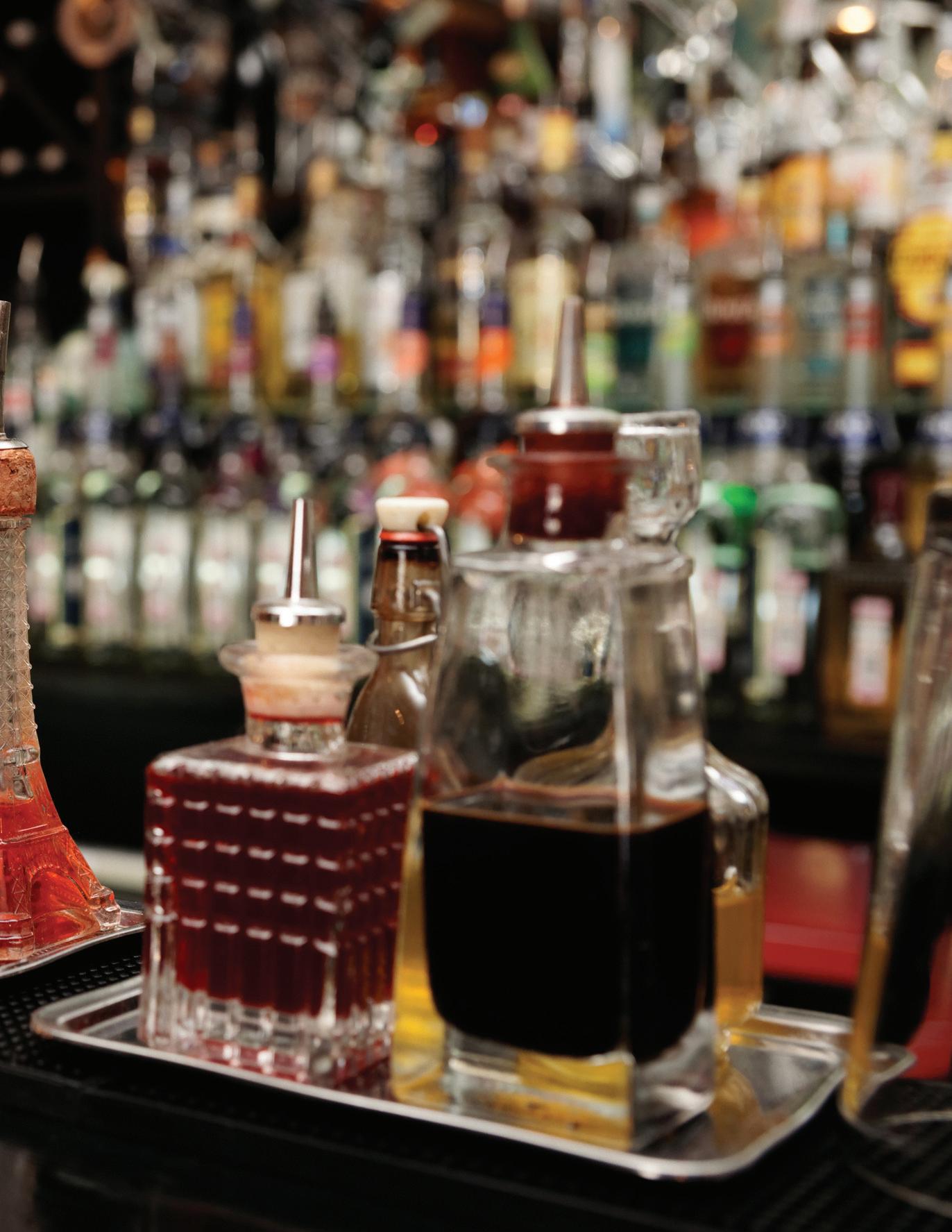
Adding sugar and cream to cocoa significantly reduces its bitterness, making it more palatable.
l ikewise, black coffee can be quite bitter. Although sugar and cream can be added to reduce the bitterness, many grow to enjoy the sharp flavor of black coffee. The type of bean and the unique roasting method will also impact coffee’s level of bitterness.
Citrus peels are well known for its bitterness, most of which resides in the white pith. As with most bitter flavors, it can be undesirable on its own, but when combined with other flavor elements, it can provide dimension and balance. o ther fruits and vegetables that may provide bitter flavors may include grapefruit, bitter melon, mustard greens, and olives. Beverages such as tonic water, bitters, and mate tea are all also considered bitter. Before shying away from bitter ingredients in the future, explore how they can be combined with complimentary tastes to build a complex and enjoyable flavor profile.
Join
s cientific g enus: r heum
Rhubarb refers to the fleshy, edible stalks (petioles) of species and hybrids (culinary rhubarb) of Rheum in the family Polygonaceae , which are cooked and used for food. The plant is a herbaceous perennial that grows from short, thick rhizomes. h istorically, different plants have been called “rhubarb” in e nglish.

Traditional Chinese medicine

i n traditional Chinese medicine, rhubarb roots of several species were used as a laxative for several millennia, although there is no clinical evidence to indicate such use is effective.
( s ource: https://www.wikipedia.com)
• i t’s only quite recently that rhubarb has been used as an edible plant. u ntil the 18th century, it was considered strictly a medicinal plant. h owever, as sugar became more widely available in that century (and sugar is required to diminish the tartness of the petiole), it began to be used as a source of food in e ngland, then elsewhere in e urope.
• The name “rhubarb” means barbarian root. i t comes from the g reek rha barbaron. The g reeks knew the plant we call rhubarb as an import, its roots having been brought from China at great expense. The new plant was considered foreign and of course, to the ancient g reeks, anything from outside
their civilization would have been seen as barbarian.
• r hubarb is long-lived. i t’s one of the most perennial of all vegetables. Plants can live for 60 years or more. h owever, it commonly begins to decline after 20 years or so, sometimes sooner. i f so, try dividing it, then replanting in a new spot in compost-enriched, well-drained soil in full sun. That will give it a new lease on life.
• r hubarb leaves are not as poisonous as often thought. i t’s well known among gardeners that you should consume only the leaf stalk (petiole), not the leaf blade itself, as the latter is poisonous. h owever, they’re only moderately poisonous. A 145 lb (65 kg) adult would need to eat 9 to 18 lb (4 to 8 kg) of rhubarb blades to reach a lethal dose. i ts toxicity largely comes from oxalic acid, a product which humans readily ingest in small quantities (it’s found in many tart-tasting foods, including spinach, sorrel and beets, as well as tea, chocolate, nuts, parsley and poppy seeds).
( s ource: https://laidbackgardener.blog)
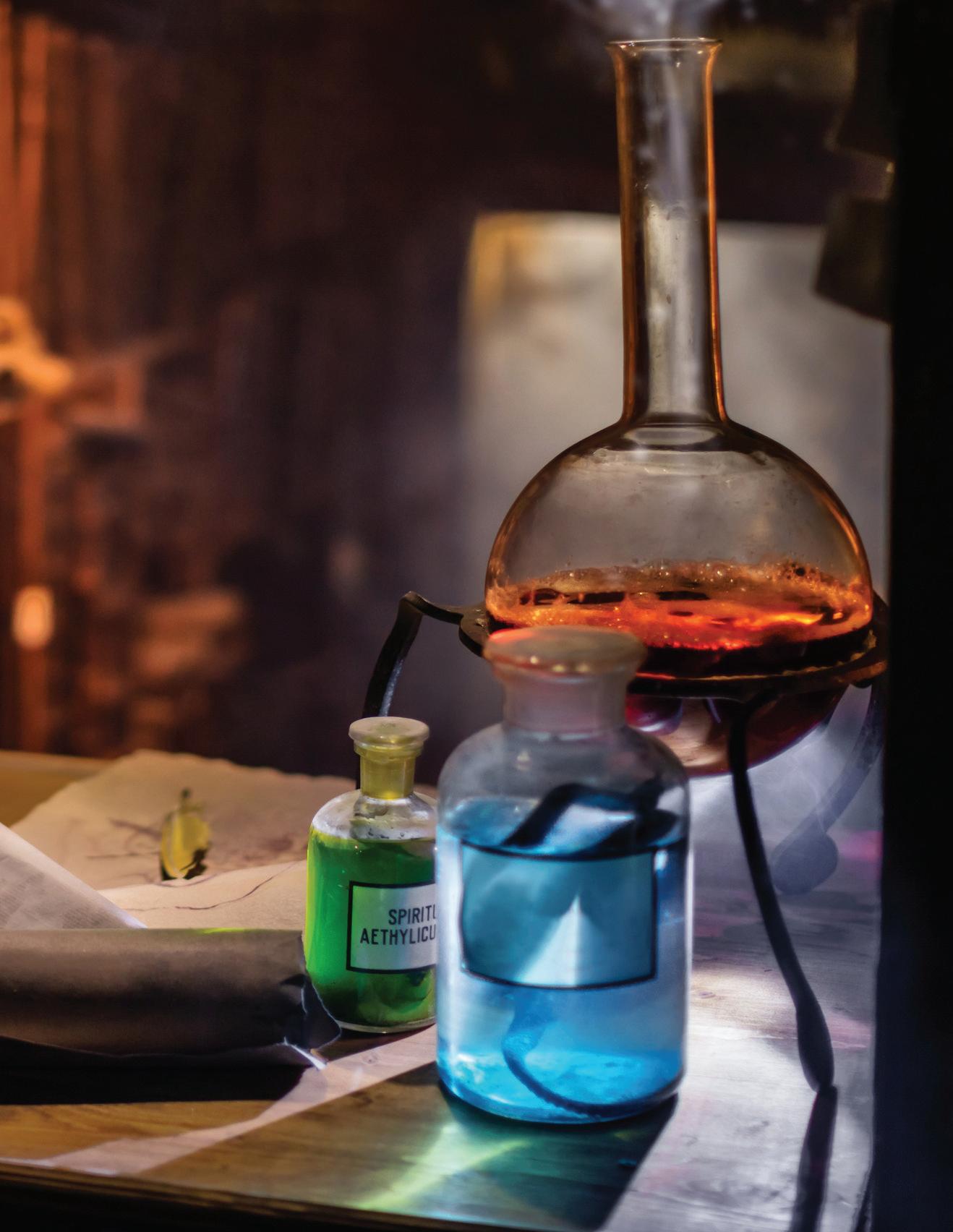

i ngredients:
• 1 1/4 C. of 100-Proof v odka or any other n eutral Alcohol
• 1/2 C. l ow Congener r um (Flor de Caña, Brugal or similar)
• 1/2 C. w ater
• 2 C. Fresh, Chopped r hubarb
• 1 Tbsp. Zest of l ime
• 1 tsp. Zest of l emon
• 1/4 tsp. w hole Coriander s eeds
• 1 tsp. Fennel s eeds
• 1/2 tsp. Chopped Cinchona Bark
• 1/2 tsp. d ried l avender
• 1 tsp. d ried Chamomile
• 3 Juniper Berries
Directions:
Take care to place larger and denser items towards the bottom of a jar, like roots, tree bark, pods, and dried berries. Add softer and smaller items on top, then pour liquor in. s eal the jar and shake it once daily for a few seconds.
Test your ingredients’ smell once daily to ensure successful infusion. w hen it’s ready, strain the solid ingredients out. Check your bitters by adding them to a drink or consuming a few small drops. Add simple syrup if you want it sweeter and use water to dilute if necessary.
g ot r um? July 2023 - 34

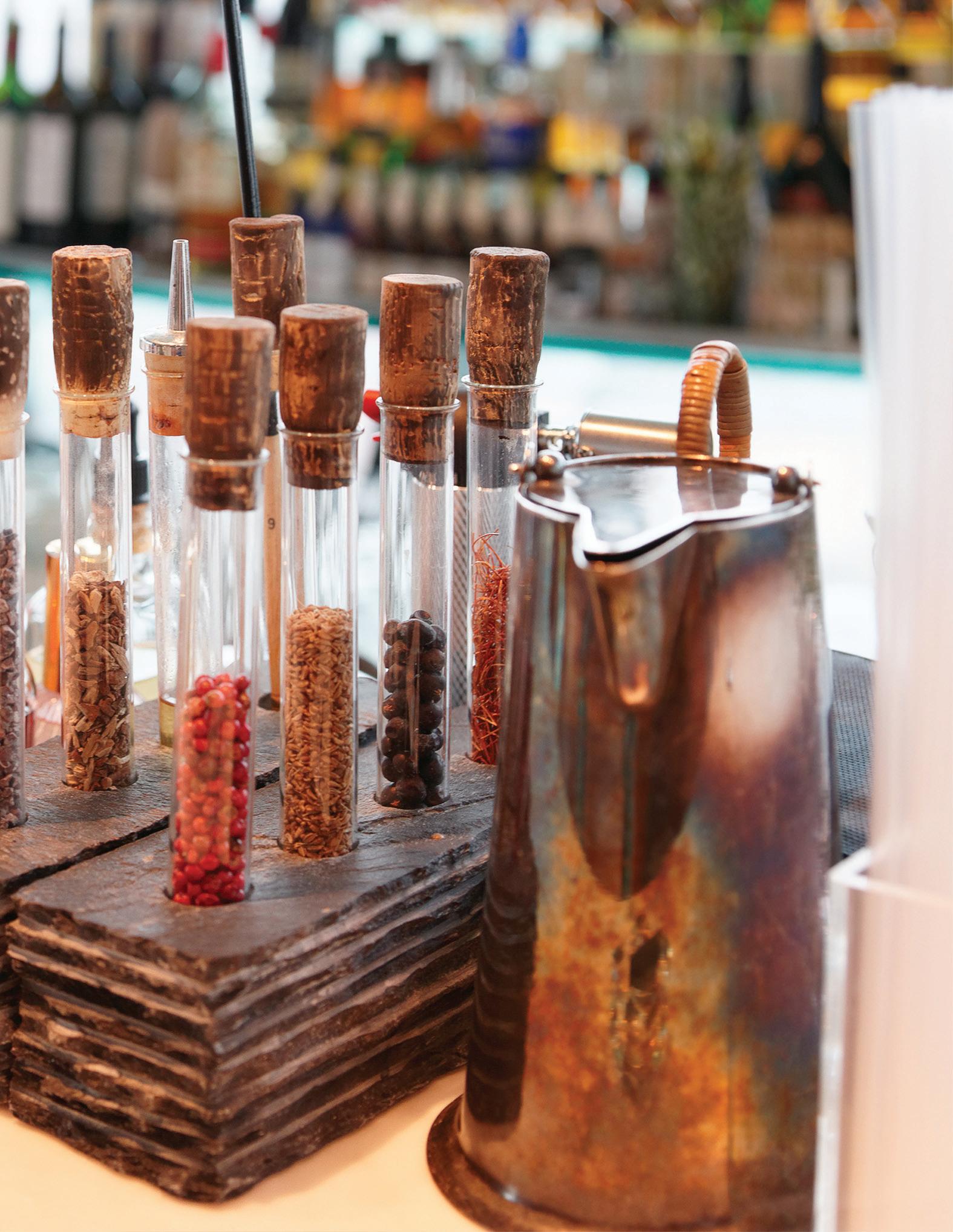

d estilería s errallés announced the release of d on Q n aranja, an exceptional flavored rum, aged in American w hite o ak barrels for up to 18 months with natural orange essence and flavor. m ade with the finest aged rums and all-natural flavors, d on Q n aranja is the fifth expression of the brand’s flavor portfolio, joining d on Q Coco, d on Q Piña, d on Q l imón and d on Q Pasión. The flavor portfolio is inspired by the fresh, tropical fruits from Puerto r ico. n aranja’s bright citrus notes and alluring sweetness make it ideal for virtually any cocktail requiring a hint of orange with the tropical, premium taste of d on Q r um. m ix n aranja with fresh juices or other citrusfocused liqueurs for a refreshing highball or low-AB v cocktail, including a d on Q o range s pritz or the d on Q m ule. “ w e’ve been creating exceptional, dynamic rums for nearly 160 years, and d on Q n aranja is a vibrant example of how we craft our aged rums and infuse with all natural ingredients to create an unparalleled flavored expression,” says s ilvia s antiago, m aestra r onera. “Flavored spirits and low-AB v drink options are on the rise and d on Q n aranja is the perfect embodiment of both, providing more options to those that want to imbibe responsibly,” added d estilería s errallés Chief m arketing o fficer, g abriella r ipepi. d estilería s errallés is one of America’s oldest

These are the most recent and noteworthy headlines in the rum industry. i f you want us to share your news with our readers, please send me an email to: m ike@gotrum.com.
family-owned businesses with a rum making tradition that spans six generations and 158 years. https:// donq.com/
The w est i ndies r um and s pirits Producers Association ( wirs PA) has elected m argaret m onplaisir as the new Chairperson of The Board, the first time a woman has held that role in the body’s 50year history. m s. m onplaisir is a 37-year veteran of the rum industry and the current head of s t. l ucia d istillers. s he has been a member of the wirs PA Board of d irectors for a number of years. i n pledging to maintain the high standards of governance and cohesiveness which have underpinned the successful growth of the organization and of Caribbean brands, m s. m onplaisir said, “ w e have many challenges to face, both in our supply chains and in the international market, but our products speak for themselves, and we see a bright future for Caribbean r um”. wirs PA members, who comprise all the countries of CA ri C om and the d ominican r epublic, met under the chairmanship of outgoing Chair Komal s amaroo, head of g uyana conglomerate d emerara d istillers, to discuss a range of issues of importance to producers.
“This is our first physical meeting since the Covid pandemic”, stated s amaroo, “ w e are pleased to host it in g uyana, in the year of the 50th anniversary of CA ri C om , and to celebrate 50 years of wirs PA”. As the global rum market, especially in the premium sector, is growing fast, Caribbean brands are also keen to explore new markets. o ne of the highlights of the meeting was an exchange with the CA ri C om Assistant s ecretary g eneral (A sg ) for s ingle m arket and Trade, Ambassador w ayne m cCook, in which producers called on CA ri C om to facilitate openings in new markets for premium rum exports. o n this matter the new Chair added “The region is poised to realize the opportunities presented by new non-traditional markets, and has the quality products, packaging and production capacity to take advantage of the rapid growth in premium spirits demand in these emerging markets.” A key agenda item for producers was the effort to strengthen action to reduce excessive alcohol use by consumers, mindful of the negative effects of over-consumption., “ w e have already made great progress over the past few years to improve labelling and most of our products now carry advice against drinking under the legal age, drinking while pregnant, and drinking while driving, as well as information on servings and calories” stated the incoming Chair m s. m onplaisir. “But we need to go further”, she added. “ w e also agreed to ramp up our efforts to implement practical measures to reduce access by underage persons to alcohol and to support government efforts around reducing drinking and driving. w e have the resources and the commitment to make a difference and we intend to do so.” Also elected at the meeting, was Clement “Jimmy” l awrence, head of the Jamaica rum producers. h e will serve as v ice-Chair of wirs PA, and will join s t. l ucia, g uyana, Barbados and the d ominican r epublic, the other members of the e xecutive Committee of wirs PA. d irectors also
welcomed three new directors into the fold, Antoine Couvreur of m ount g ay d istilleries in Barbados, g raham w illiams of r enegade r um in g renada, and Perla Perdomo of Travelers’ l iquors of Belize. A warm welcome was also extended to l aurent s hun, new head of Angostura, to his first wirs PA meeting upon assuming the leadership role at the Trinidad company. https://www.wirspa.com/
B acar D i s U r V e Y sho W s 29% of B ritish D rin K ers P refer r U m o V er B eer
n ew research from BACA rd Í r um has revealed over a quarter (29%) of Brits asked are opting for rum-based drinks this s ummer, over cold pints of lager (15%). i n fact, the Piña Colada ranks top as Brits’ favorite summer cocktail (9%), followed by s ex on the Beach (7%) and a m ojito (5%). l ondoners are particularly partial to a Piña Colada, with 1 in 3 (35%) l ondoners revealing r um is their spirit of choice in s ummer months. w ith warmer months on the horizon, the research has also seen Brits rank their top summer scents and flavors, with coconuts (31%) topping the chart along with freshly mown grass (74%) and chip shop chips (22%). i n fact, over half of Brits asked (59%) confirmed to choosing the flavor of coconut as soon as the s ummer sets in, with coconut (59%), pineapple (52%) and mango (43%) being the top tastes of the summer that transport them to warmer climes. The research follows the launch of the new BACA rd Í Caribbean s piced which features pineapple and coconut as core flavors, alongside vanilla and cinnamon, it’s sure to set the nation’s tastebuds tingling, transporting them to the tropics every single sip. m arie Peyto, u K Brand d irector of BACA rd Í r um said “ w ith a combination of aged rum, pineapple, coconut, and spices, i ’m delighted that our new BACA rd Í Caribbean s piced includes the u K’s favorite summer flavors. i t’s made for mixing, perfect for the nation’s favorite tropical serves or adding the taste of the Caribbean to simple drinks. w e’re opening the Caribbean Flavor r ooms to give Brits the chance to experience their favorite flavors and our new rum in a truly immersive way. w ith the weather warming up, it’ll be a great way to kick off BACA rd Í r um’s series of events across the country this s ummer”. To celebrate the u K’s favorite summer flavors, l ondoners will be able to visit the BACA rd Í Caribbean Flavor r ooms, devised with sensory expert n atalie Alibrandi to bring the flavors to life. The unique sip-along experience will take cocktail lovers on a sensory journey designed to engage with the sensory system through sight, sound, smell, and taste. h ighlighting the pineapple, coconut, vanilla, and cinnamon tasting notes of the new BACA rd Í Caribbean s piced. https://www.bacardi.com/
Piccadily d istilleries is proud to announce the u . s . launch of i ndia’s first pure cane juice rum, Camikara r um. Through the gift of land and time, Camikara, i ndia’s first pure cane juice rum, is an exquisite spirit that has taken form through centuries of learning and teachings, processes, and ingredients. Casked and bottled in the extreme climate of the northern plains of
i ndia, each bottle of Camikara r um 12 Y o , has been rested for 12 long years in American oak barrels. Camikara r um dates back to 2009 in a quaint village in i ndia, where the sweetest stalks of sugarcane were pickled, the juice distilled and placed in 956 American oak casks. The spirit then sat patiently for 12 years, interacting with the wood, thereby gaining color, flavor, and character. w hen the spirit was finally drawn from the barrels, the liquid was immediately named ‘Camikara,’ meaning liquid gold, a name of s anskrit derivation, keeping true to the i ndian heritage at Piccadily d istilleries. w hen the barrels were finally emptied, it was discovered that only 6.6% of the original cane juice spirit remained, with the rest having been usurped by the angels as their share. The leftover spirit was unique to i ndia, with a taste and texture comparable only to the finest rums globally. “ w e never imagined we would inadvertently create such a rum. o ur inspiration came from the history of the local households of the area where they have been distilling cane juice to make a local brew called l aahan,” said s iddhartha s harma, Promoter at Piccadily d istilleries. “ i t has been part of the culture and customs of the Punjab region for thousands of years. o ur goal was to revive this age-old tradition and we even went a step further by maturing it in oak casks, to bring it up to international standard. i t is a testament to our land’s history, culture, and people.” Piccadily d istilleries produced 3,600 numbered bottles for worldwide distribution, with 1,200 available in the us to be imported and distributed by their exclusive partner, i mp e x Beverage. e arlier this year, Camikara 12 yr brought home a g old m edal win and 95 points from the prestigious 2023 i nternational w ine & s pirits Competition. s ince its arrival in the us , it has received recognition from both the 2023 s an Francisco w orld s pirits Competition and the 2023 u ltimate s pirits Challenge. https://www.piccadily. com/
r obb and Cindy w illard’s obsession with rum began 25 years ago when they would take sailing trips throughout the Caribbean. They visited large distilleries in v enezuela and g renada, smaller operations on other islands and backwoods moonshine operations. After two years of collecting rums from wherever they went, they decided to try their hand at creating their own blend. h owever, their construction and real estate businesses got in the way. i n 2020, r obb left the construction industry and focused full time of creating a premium sipping rum. Cindy would come home from selling homes to find their kitchen full of open bottles, tasting jars and wonderful aromas. They finalized the formula they wanted last year and filed for TTB label approval. This s pring, with the help of the folks at Black h at d istillery in Colorado s prings, they were able to blend and bottle their first offering, r obb’s r ed r umm, a cacao flavored rum. Their launch event was in April at the Public h ouse at the Alexander in Colorado s prings, followed by a well-received appearance at the s outhern Colorado s tillFest distillery festival. Although busy with sales and marketing, r obb is already working on his next rum, s outhern Cross.
h appy r aptor d istilling announced the expansion of its signature line of 504 s yrups. The expansion includes the addition of two new varieties of 504 s yrups, cucumber mint and lavender lemon peppercorn, as well as the increased availability of continental shipping throughout the u s ., Canada, and m exico. The expansion marks the first significant step forward in the award-winning distillery’s production since h urricane i da in 2021. “ w hen h urricane i da hit l ouisiana in August 2021, this project and many others went on hold so that we could focus on keeping our doors open,” said Co-Founder & Chief Brand o fficer m eagen m oreland-Taliancich, “Thanks to our community, we are here to tell the tale and we’re growing. w hile we can’t legally ship craft spirits in l ouisiana, having the bandwidth to expand shipment of our non-alcoholic 504 s yrups means sharing a piece of n ew o rleans and of our story with the world.” As with all h appy r aptor d istilling products, the complete line of 504 s yrups is locally handcrafted in the Crescent City from 100% l ouisiana cane sugar and only whole, real ingredients. 504 s yrups Cucumber m int marks the company’s first fundraising product in partnership with s prout nol A, a n ew o rleans-based nonprofit organization that provides established and developing farmers in l ouisiana with technical and social support. i nspired by the abundance of s prout’s community gardens, 100% of the profits of 504 s yrups Cucumber m int will benefit s prout through the end of 2023.
“Building an equitable food system is joyful community building,” said s prout Community Food m anager m ina s eck, “The fact that too many families lack access to basic necessities and fresh food is heartbreaking, but the community building and joy we experience in urban agriculture is immeasurable. i n n ew o rleans, food is the heartbeat of our city and growing food is special part of it.” h appy r aptor’s mission is to create premium rum inspired by n ew o rleans’ culture, community, and the moments that bring us joy. s ince 2020, it has donated over $40,000 in direct funds and in-kind goods and services to the n ew o rleans community, and now partners with over 100 nonprofit organizations every year. For more information on 504 s yrups and online ordering, visit 504rum.com or follow @504rum on Facebook and i nstagram. www.happyraptor.com
d own i sland s pirits is set to launch two new additions to their line of single cask rums. The latest expressions hail from Brazil and m artinique, and bring a wild array of fresh aromas and flavors. “ w e were thrilled by the reception of our first four rum bottlings late last year,” said m ike s treeter, the founder and owner of d own i sland s pirits. “ o ur brand aims to truly add to the availability of top-quality cane spirits in the us and we feel that our latest casks from m artinique and Brazil will do just that. They are both exceptionally flavorful rums made by distilleries who have a long history of excellence in the industry.” d own i sland’s 100% cane juice bottling from m artinique was column distilled on a 19-plate column still in 2017 at a well-established distillery in s ainte- m arie, a rural community on the French-Caribbean island. i t was aged for 6 years in
once-used Bourbon casks, 2 more years in e urope and bottled in Florida without the use of additives, coloring or filtration. l ike the rest of the d own i sland s pirits collection, this expression is bottled at cask strength, 58% abv. The Brazil r um bottling from d own i sland s pirits was column distilled in s ao r oque at e pris d istillery in 2011. i t is an 80/20 blend of cane juice and molasses rum that was aged for 6 years in Amburana wood barrels and an additional 6 years in American o ak. i t is free of additives, coloring and filtration, and was bottled at cask strength, 55.1% abv. The new d own i sland s pirits expressions have garnered early buzz from collectors and enthusiasts due to their origin and overall unique nature of the distillate. “ w e have been fortunate to draw a loyal group of fans and friends from these very early days of our brand,” said s treeter. “ w e think that our Brazil and m artinique rums will meet and hopefully exceed the high expectations of our customer base. e arly feedback has been incredible.” d istribution for d own i sland s pirits currently focuses on Florida and m assachusetts with n ew York, Texas and California expansion in the works for late 2023/24. o nline retail orders with shipping to 40+ states are available at their website, https://www.downislandspirits.com/
B h AKTA s pirits announced its entry into the ultrapremium rum category with the launch of its B h AKTA 1990 r um. h ailing from two singular distilleries, B h AKTA 1990 r um couples 1985 25 Year Jamaican column still rum from Clarendon/ m onymusk with 1990 23 Year Jamaican pot still rum from Appleton e states. u nearthed by r aj Peter Bhakta, these rare rums were first blended in 2014. After enjoying a further three years aging in second-fill mg P bourbon and rye barrels, B h AKTA 1990 r um’s aging journey culminated in The B h AKTA m ethod, through which this spirit earned its signature finish in casks of ultra-rare s ingle v intage B h AKTA 1976 and 1980 Armagnac. “ d iscovering this rum was an absolute breakthrough. i t’s one of the most astoundingly complex spirits i ’ve ever encountered and i couldn’t be more excited to share it with connoisseurs, collectors, and all consumers who appreciate deeplyaged rum as much as i do,” says Founder r aj Peter Bhakta. “ s ince i exited w histlePig, i ’ve traveled the globe in pursuit of the oldest, rarest, and most exquisite spirits known to man. B h AKTA 1990 r um is so sublime it stopped me in my tracks. i t’s absolutely won its place in our oldest-in-the-world collection of v intage s pirits.” “ u ltra-premium, barrel-aged rum is becoming one of the most sought-after categories in America today,” adds Co-Founder l eo g ibson. “This expression is rich, deep, and opulent, bearing an extraordinary age statement backed up by craft pedigree. As a Jamaican rum showing a fruit-laden and whiskey-forward flavor profile elevated by the complexity of its unique finish in old Armagnac casks, B h AKTA 1990 r um connects the best of the n ew w orld with the ancient artisanship of the o ld w orld. i t’s the perfect bridge for aged whiskey- and rumlovers to discover v intage s pirits in general, and their pinnacle, Armagnac, in specific.” This limited release of B h AKTA 1990 r um, consisting of only 1,500 bottles, is now available in twelve states: n ew
York, n ew Jersey, m assachusetts, i llinois, w isconsin, Colorado, Texas, g eorgia, Florida, v ermont, Tennessee, and m ichigan. B h AKTA 1990 r um is also now available for purchase through partners linked at their website, https://www.bhaktaspirits.com/
r enegade r um announced that their s ingle Farm o rigin: h ope (Pre-Cask) was awarded the Best i n s how m edal for the category of u naged w hite s pirit, Best i n Class m edal within the o verall r um and r hum Agricole categories and d ouble g old m edal at the 2023 s an Francisco w orld s pirits Competition. These results were officially announced at the Top s helf g ala event that took place in l as v egas on s aturday, June 17th. The Pre-Cask Collection for r enegade r um was previously launched in the u s last summer and has also won additional awards/ scores with u ltimate s pirits Challenge and w ine e nthusiast to name a few. o n g renada’s southeastern flank, sheltered from the Atlantic Trade w inds by a narrow mangrove belt, stands r enegade’s distinctive terroir. Bright, iron-red clay, pyroclastic boulders, rich, alluvial soil and a cool, high water table ensures a humid microclimate with lush cane in the driest season. For this rum, r enegade harvested the oldest of their varieties, Cain, from m amo Field, which stands on the terroir known as Boulders. s ingle Farm o rigin: h ope (Pre-Cask) is a 100% pot-still rum, bottled at 50% AB v r enegade r um is located in g renada, using fresh sugar cane juice rather than generic molasses (a by-product of sugar production), grown on the diverse terroirs of g renada in the Caribbean. https://renegaderum.com/
The Business r esearch Company released the r um m arket i nsights of 2023report last month. i t is an extensive and comprehensive report that provides a complete analysis of the market’s size, shares, revenues, various segments, drivers, trends, growth, and development. The report also highlights the limiting factors and regional industrial presence that may affect the market’s growth trends beyond the forecast period of 2030. The market research aims to give a complete understanding of the industry’s potential and to provide insights that will help businesses make informed decisions. The r um m arket r eport is an impressive 126 pages long document that includes a comprehensive table of contents, a list of figures, tables, and charts, as well as extensive analysis. The report indicated that the global rum market is expected to grow from $13.69 billion in 2022 to $14.35 billion in 2023 at a Compound Annual g rowth r ate (CA gr ) of 4.8%. The rum market is expected to reach $17.68 billion in 2027, at a CA gr of 5.4%. The countries covered in the rum market report are Australia, Brazil, China, France, g ermany, i ndia, i ndonesia, Japan, r ussia, s outh Korea, u K, and us A. https://www.thebusinessresearchcompany.com/report/ rum-global-market-report



r egardless of distillation equipment, fermentation method, aging or blending techniques, all rum producers have one thing in common: sugarcane

w ithout sugarcane we would not have sugar mills, countless farmers would not have a profitable crop and we would not have rum!
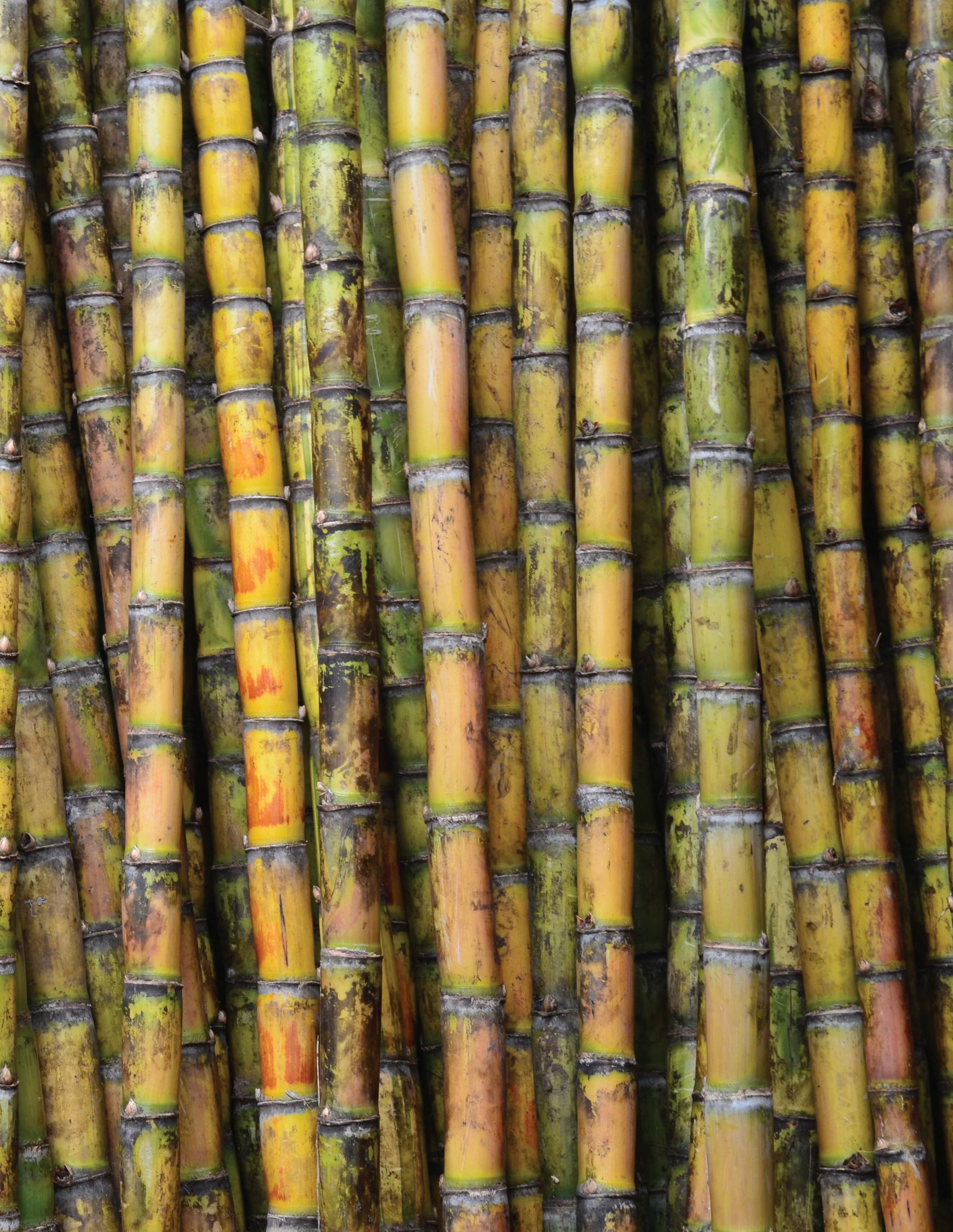
Required Report: Required - Public Distribution
Date: April 13, 2023
Report Number: NU2023-0002
Report Name: Sugar Annual
Country: Nicaragua
Post: Managua
Report Category: Sugar

Prepared By:
Approved By: Evan Mangino
Report Highlights:
FAS/Managua projects Nicaraguan sugar production and exports recovering in marketing year 2023/24, despite deteriorating political and economic conditions in Nicaragua, with the anticipated arrival of an El Niño weather system and drier weather in the latter half of 2023. Record-setting precipitation in 2022 helped drive agronomic and processing yields lower, with marketing year 2022/23 sugar exports the lowest since marketing year 2018/19, on lower sugar production and exportable volumes.


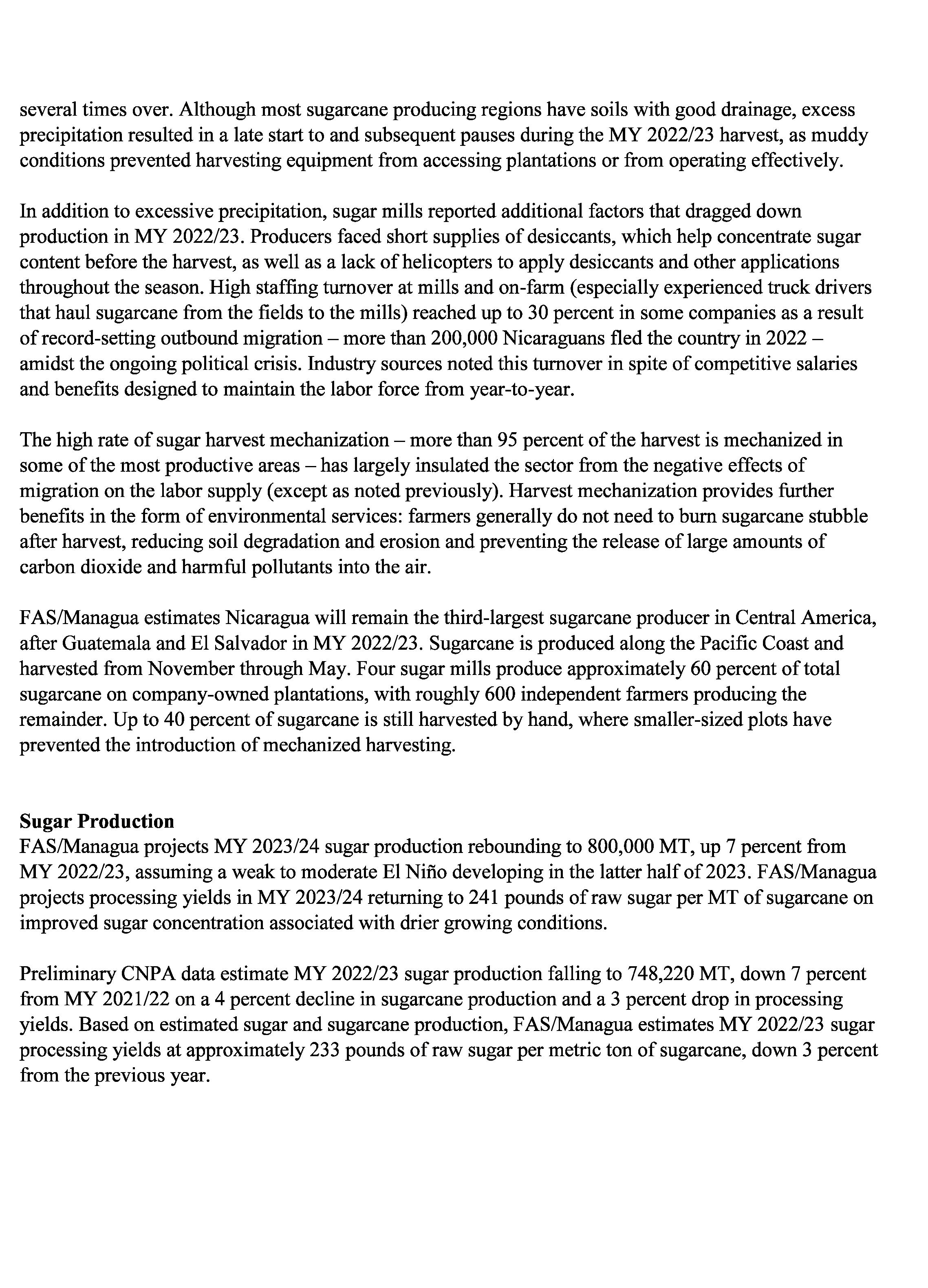


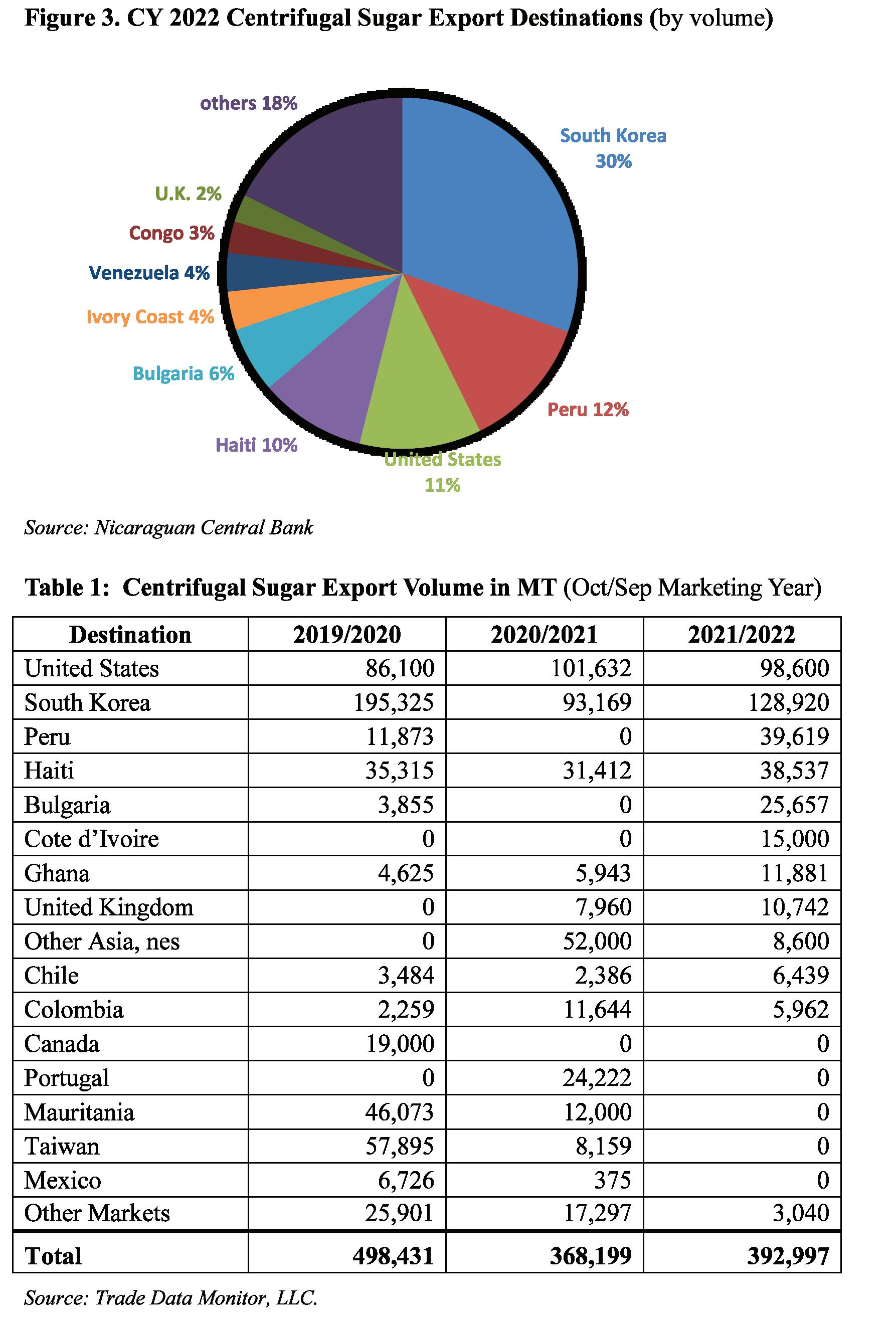




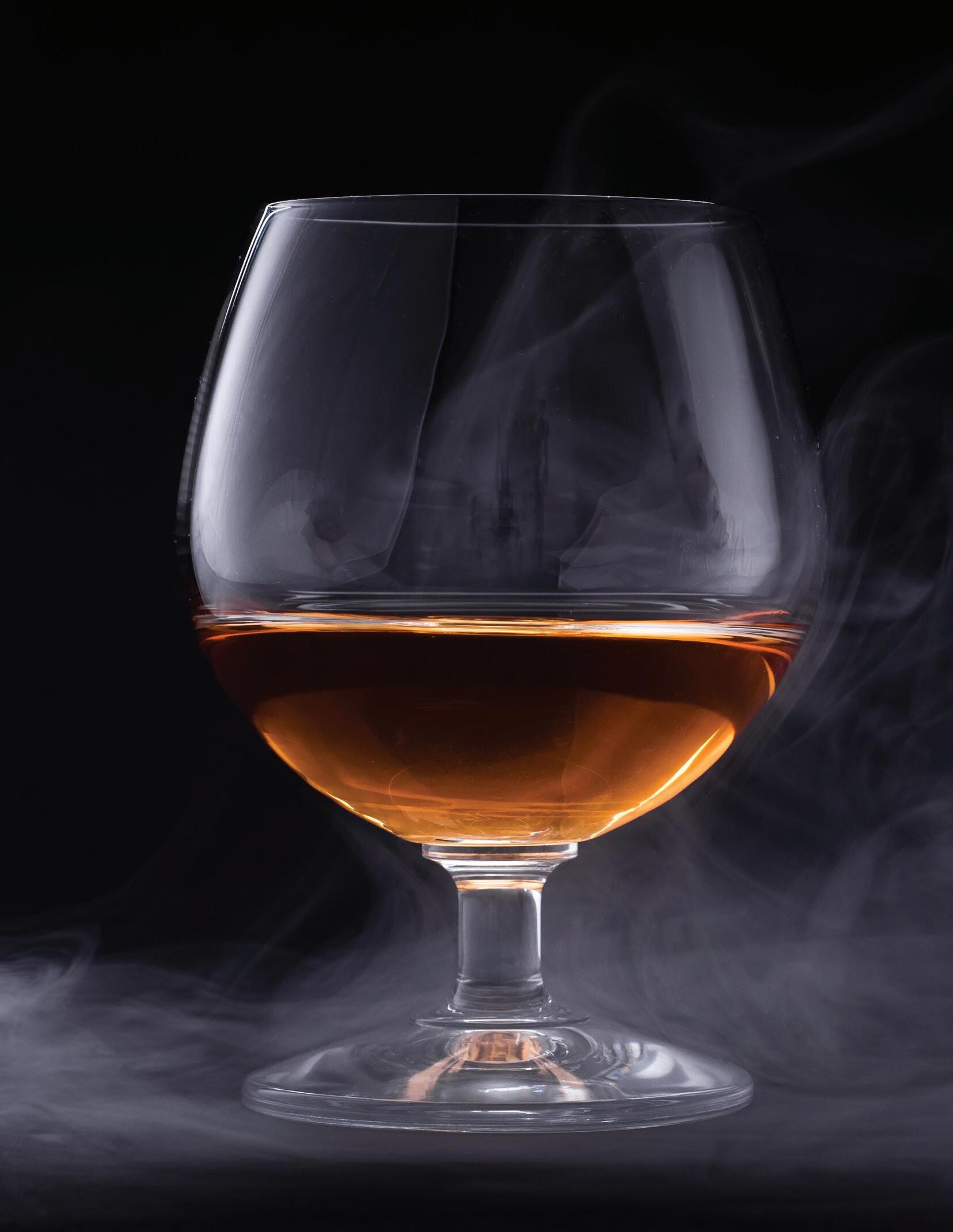 by Philip i li Barake
by Philip i li Barake
my name is Philip i li Barake, s ommelier by trade. As a result of working with selected restaurants and wine producers in Chile, i started developing a passion for distilled spirits and cigars. As part of my most recent job, i had the opportunity to visit many Central American countries, as well as, rum distilleries and tobacco growers.
But my passion for spirits and cigars did not end there; in 2010 i had the honor of representing Chile at the i nternational Cigar s ommelier Competition, where i won first place, becoming the first s outh American to ever achieve that feat.
n ow i face the challenge of impressing the readers of “ g ot r um?” with what is perhaps the toughest task for a s ommelier: discussing pairings while being well aware that there are as many individual preferences as there are rums and cigars in the world.
i believe a pairing is an experience that should not be limited to only two products;
it is something that can be incorporated into our lives. i hope to help our readers discover and appreciate the pleasure of trying new things (or experiencing known things in new ways).

Philip # gr CigarPairing

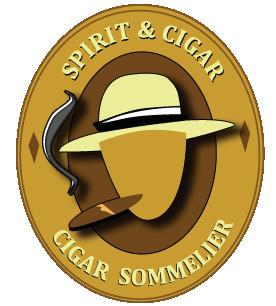

d uring the last days of June, while thinking about July’s pairing, l uis shared an interesting idea that had some potential, which was to freeze a shot of espresso and use it instead of regular ice in a pairing. l et’s see how this works out. h opefully you’ll have an ice cube tray around. i n my case i had a silicone mold to make ice spheres, but you can use a traditional tray/shape if that is all you have available.
i made my ice sphere with Costa r ican coffee, using a coffee maker i have at home. i t was strong and i didn’t add any sugar, which turned out to be a mistake, as you’ll find out soon. As you recreate this at home, i suggest that you add a tablespoon of sugar and dissolve it well, prior to freezing. This will balance the pairing later.
2023
i was thinking about an elegant pairing, one that would showcase the true character of the rum, but also one that would change along as the pairing progressed (as the intensity of the espresso increased). i selected a r hum from m artinique with a very special character, Clement 10 years old, but at the beginning of the pairing, the opposite occurred. The first few sips were interesting, but the coffee very quickly dominated the color, aroma and the taste. i t could be related to how the ice ball melted, possibly releasing more intense coffee elements first, leaving more water than coffee behind. i learned the lesson and decided to change the rum for one that had a high concentration of

sugar per liter. m y options included r on h echicera, d iplomático and Zacapa 23. i selected this last one, to turn the pairing around, since i still had time to save it.
As far as the cigar, while smoking the first third there really was no pairing. The first attempt (with the Clement) was disproportionately intense, with the coffee notes dominating everything. n ow with the second rum, the pairing was acceptable, the coffee moved away from the spotlight and into the background, the sweetness of the rum was well integrated in the pairing and i was also able to detect the tobacco notes from the cigar. For this pairing i had selected a Cohiba Toro (54 x 6) from the Blue line, which is d ominican tobacco with h onduran wrapper. This cigar is supposed to have a high
intensity, which was not noticeable during the first third. m y cigar started to burn unevenly, perhaps for the frequency of my puffs while fighting with the first rum, but after changing to the second rum, the cigar’s character was more aligned with my expectations, offering a better experience.
i n summary, it is a good experiment to conduct at home, but keeping in mind my comments about adding sugar to the espresso and using a sweet rum. i hope that you can recreate this at home, personalizing it to your liking, if you follow my advice, your results will be better than my first attempt.
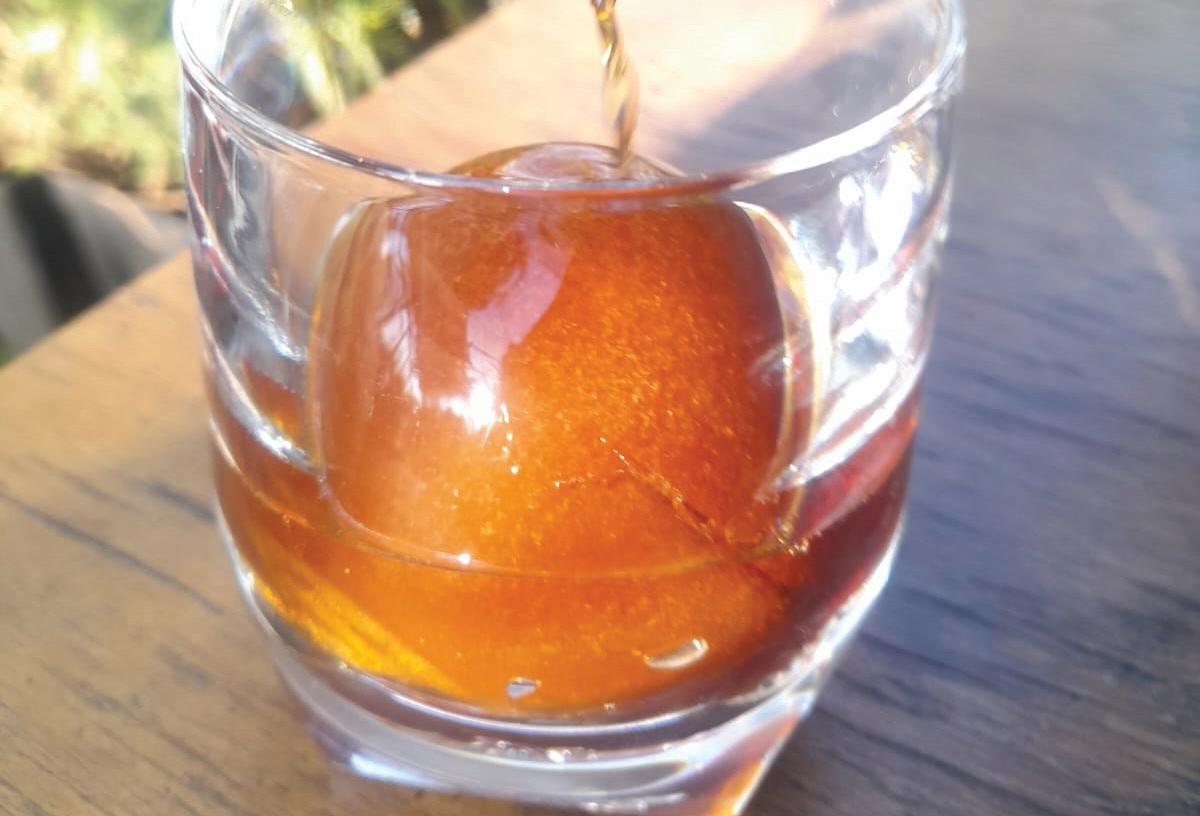
Cheers!
Philip i li Barake # gr CigarPairing





